A First-Timers Guide to Barcelona, Spain
Barcelona, a bustling Spanish metropolis, has something for everyone. With its rich history as a dominant city in the Roman Empire, culture enthusiasts will find plenty to satisfy their curiosity. Let’s dive into this First-Timers Guide to Barcelona, Spain.
As one of the most popular destinations in Europe, tens of millions of tourists flock to see the iconic architecture and modernist masterpieces of world-renowned Catalan Antoni Gaudí.
Barcelona is a city of late-night dinners, afternoon siestas, fuming football fanatics and some seriously killer cuisine. After spending four years living here, it’s safe to say I know this city like the back of my butt; or is it hand? Irrelevant. This city feels just like home. And well, mi casa es su casa.
Best Time to Visit Barcelona
With a Mediterranean climate, the high season kicks off between May and October. The summer provides pristine conditions to enjoy the nearby beaches and thriving cultural scene fully.
The winter is relatively mild, there are fewer tourists, and you’re almost always guaranteed a few rays of sunshine throughout the day! Winters here are nowhere near as brutal as winter in Eastern Europe.
Local Language: Learning the Lingo
Boasting Catalan culture and tradition, Barcelona flaunts its official language, Catalan. It’s pretty easy to get by with English. However, basic Spanish (Castellano) is widely appreciated.
Side note: Catalan will get score some serious points with the locals. Try to learn a few basic phrases, and you’ll be surprised what opportunities open up!
La Sagrada Familia
Without a doubt, this UNESCO World Heritage Site is one for the books. You’ll be blown away by Gaudí’s Modernist architecture that depicts man, nature and religion.
Most days, I go well and truly out of my way just to pass this awe-worthy basilica. It’s been in construction for over a century, meaning that once it’s completed, it will have taken longer to build than the Great Egyptian Pyramids. How wild is that?! Antoni Gaudi, a devoted Catholic and proud Catalan dedicated a decade of his life to crafting and perfecting this undertaking.
I suggest booking an audio guide to enrich your knowledge about the monument's fascinating history and gain insight into Gaudí's intricate and innovative design. Try to visit early morning to see the sheer magic of the sun shining through the stained-glass windows. A spectacle indeed. Admission is €15 online and €18 at the door.
La Sagrada Familia is easily one of the best things to do in Barcelona if it’s your first time visiting the city.
Right opposite La Sagrada Familia is the Plaça de Gaudí, a little park with a pond, luscious towering trees, and exceptional views of the basilica. If it’s your first time coming to Barcelona, you might be overwhelmed with the wealth of things to do here, so this is a great spot to sit down and smash a quick snack before moving on to the next attraction.
Sant Pau Art Nouveau Site
If you’re a fan of Gaudí but don’t want to brave the swarms of tourists, this bad boy is for you. As one of Europe’s original art-nouveau sites, this twentieth-century Modernist complex features jaw-dropping domes, mosaics, sophisticated sculptures and stained-glass windows.
The pavilions are surrounded by gardens and connected by underground passageways. During the summer, there are live music events; check out the details here.
Bunkers del Carmel: ‘Turó de la Rovira’
Not many cities around the world, let alone in Europe, offer free views of a major city, so let’s give a big Gracias to España for this one. Bunkers provide some of the best 360° views of the city.
This section is dedicated to all history enthusiasts. The site was formerly an anti-aircraft bunker during the Spanish Civil War. It could shelter up to 3000 civilians.
The Sagrada Familia, Hotel W, Montjüic, and the Mediterranean Sea offer breathtaking, top-notch views.
Bunkers is a killer spot for your sunrise or sunset. If you’re down to chillax to the max, then this is where it’s at. Bask in all of Barcelona’s glory as you watch the sun depart for the day. For the perfect combo, bring along a few beers & some munchies.
Parc Güell
Get ya Gaudí on! If you're looking for a must-see attraction, this 45-acre garden complex from the early twentieth century is definitely worth a visit. It ingeniously combines elements of Catalan nationalism, ancient poetry, mysticism, and nature to create a Utopian urban park.
Barcelona's UNESCO World Heritage Site is a must-visit destination that showcases the brilliant mind of Antoni Gaudí. The place contains intricate details and unique elements, such as the Serpentine Bench, Plaça de la Natura, the Pink Tower, Casa Larrard, La Casa Trias, and the impressive La Escalera Monumental. You'll be amazed by the stunning mosaics and architectural designs that make for perfect photo opportunities.
Parc Güell is best enjoyed in the early mornings when the sun is rising, and it is almost dead silent with the sounds of local birds chirping. The flocks of tourists arrive from 9 am onwards. Beware.
Travel Tip: Accessing most park areas is more than possible without spending a single cent. Arrive before 8 am for free entrance! It is also unguarded after 7 pm. However, it is quite dark then.
If you want info on all things Gaudí, including exclusive tickets, check out this detailed guide to Gaudí’s Best Attractions.
Montjüic
This gem of the Catalan Capital offers an array of attractions for all ages.
Montjüic also has countless museums, luscious gardens, fountains, elegant sculptures and city views. The castle itself is beyond astounding.
The Castell de Montjuic, originally constructed as a fortress in the 18th century, has been converted into a museum featuring military exhibits and historical information. The admission fee is €5, but on the first Sunday of every month, entry is free after 3 pm.
Make the time and check out the Gardens of the Grec Theatre, where there’s an amphitheatre carved into a hillside!
First-timers tip: Catch the cable car from La Barceloneta to Montjüic. The aerial tramway stretches over 1,450m. It’s only a 10-minute trip and offers excellent views over Barcelona. A one-way ticket costs €11, and a round-trip ticket costs €16,50.
El Tibidabo and the Temple Expiatori del Sagrat Cor
Want to witness Catalonia in all its glory?
This is one of my all-time favourites here in Barcelona, El Tibidabo. Surrounded by the sights of picturesque mountains and accompanied by Europe’s third-oldest theme park, this combination will leave you speechless. But it just gets better.
Located in the Serra de Collserola, at the summit of Mount Tibidabo, right next to the nineteenth-century theme park, is the Temple of the Sacred Heart of Jesus.
There are a lot of churches in Europe alone, but this one is well worth your time. There is a giant statue of Jesus on top, which at first sight, resembles that of Rio de Janeiro. You’ll want to spend your entire day here.
Entry to the Basilica is free. However, if you want to go up the lift, there is a charge of €3,00. It’s open on the weekends, except in the winter. Admission is €28.50 and includes all rides, attractions and shows within the Amusement Park.
Parc de la Ciutadella & the Arc de Triomf
Say si señor to Barcelona’s largest urban park. If it’s your first time travelling to Barcelona, set aside an afternoon for a picnic in the Parc de la Ciutadella.
The park is filled with a diverse array of people, African drummers, artists, joggers, local DJs and aspiring acrobats practising their tricks on the grass, others alike all huddle in this hotspot to soak up in the European sun. This park suits just about everybody.
Along with the monumental waterfall, the Castle of the 3 Dragons, the Catalan Parliament and the Umbracle, there’s also the opportunity to immerse yourself in luscious greenery and row a boat in the lake. During the summer months, the city council puts on Musica als Parcs, a series of free concerts, usually including jazz, classical or gospel.
Just a short walk away lies one of the city’s most iconic landmarks, the Arc de Triomf, which features ground-breaking sculptural symbolism.
During the day, this space is filled with performers, local vendors and grown-ass men blowing some big-ass bubbles. This area comes to life at night as local street artists jam and gatherings flourish under the lights.
La Rambla and the Gothic Quarter
Consider yourself a culture vulture? Pinned as a quintessential BCN experience, La Rambla is lined with trees and offers a 1.2km stretch of walking distance to moonwalk your life away. The most important thing to remember when travelling to Barcelona for the first time is to secure your belongings and remain aware of your surroundings, especially in this area.
La Rambla forms a boundary between El Raval and the Barri Gòtic, known as The Gothic Quarter.
The Gothic Quarter, the city's historic centre, is known for its medieval and cobblestone streets. It offers many of the most popular attractions that can be explored for free.
Flaunting its gothic charm, the alleyways of the Barri Gòtic are filled with popular bars, quirky shops, Artisanal stores and a multitude of trendy plaças.
A visit to Plaça Reial is highly recommended, as this lively square is dotted with charming cafes and restaurants. It's the perfect place to indulge in delicious patatas bravas and sip on cava, a delightful sparkling wine.
Close by El Born is La Catedral de Barcelona. which features Neo-Gothic architecture with colourful stained-glass windows, extraordinary domed ceilings, and a courtyard filled with gargoyles, mythical creatures, palm trees and orange trees.
Casa Batlló
Restored by Gaudí in the 1900s, Casa Battló is famous for its undulating, dragon-esque shape and colourful, eye-catching design.
Casa Battló looks captivating in the morning light when the sun shimmers against the scale-like tiles on the roof. The Art Nouveau style heavily influenced this UNESCO Heritage Listed Mansion.
It is embellished with mosaics made from broken ceramic tiles, and the roof is arched and likened to a dragon. If you appreciate live jazz, blues, pop or funk music, Casa Battló puts on a sell-out series of live concerts called the Magic Nights.
This is the perfect summer evening experience; the warm Mediterranean breeze and a sneaky bev or four. To avoid queuing up for hours or missing out, it’s best to book in advance.
La Pedrera (La Casa Milá)
Built from 1906 to 1912, ‘The Stone Quarry’ was designed to evoke the sense of a snowy mountain. It features epic interiors, undulating forms and excellent chimneys. It was the last private residence designed by Gaudí, and nowadays, only a few tenants still live here.
During the evening, visitors can enjoy a tour of the premises and a stunning audio-visual display projected on the Modernist rooftop of the mansion. The experience is known as La Pedrera: The Origins Show and includes a glass of cava (a sparkling Catalan champagne) and delicious snacks to enjoy.
On the 23rd of April, the day of Sant Jordí (the Catalan version of Valentine’s Day), La Pedrera opens its doors for free. Oh, happy days! If it’s your first time coming to Barcelona, I’d recommend just swinging by Casa Milá on your way to Casa Batllò.
Museu de Picasso
Discover the artistry of Picasso by visiting his museum. Explore five adjoining medieval stone mansions that showcase over 4000 captivating artworks, and delve into the life and legacy of one of the world's most renowned artists.
Admission is €11, with discounted prices for students and seniors. First-timers travel tip: Thursday evenings from 6-9 pm & the first Sunday of every month are free. *Book online four days in advance.
Beaches in Barcelona
Catalonia has some seriously spectacular beaches on offer. Amongst tourists, the most popular are La Barceloneta and Marbella. This is your most straightforward option if you’re brave enough to battle the crowds.
The beachfront is packed with intense beach volleyball matches, music to get ya groove on, typical Spanish chiringuitos (beach bars), and random men selling dirt-cheap beers from mysterious plastic bags.
This is your typical European summer: topless beaches, the salty ocean, and the scorching Mediterranean sunshine.
If you're looking for exceptional beach destinations, consider visiting Tarragona, Sitges, Girona, Lloret de Mar, and Tossa de Mar. These places are worth your time and effort to explore.
First-timers tip: Avoid purchasing cheap mojitos from those ‘ambitious entrepreneurs’; they are not made, nor stored, in the most sanitary of conditions. Also, watch your valuables when you jump in for a swim. Thieves run ravage here too.
Markets in Barcelona
With nearly 40 markets spread throughout the city, fresh produce is abundant for locals and tourists alike.
Mercat de la Boqueria is by far the most popular. As the biggest food market in Europe, there’s an eclectic display of fresh fruits, vegetables, and seafood, along with tropical juices, scrumptious sweets and your typical Spanish jamón ibérico and jamón serrano.
For something less frantic, try Mercat de Santa Caterina, the Mercat de la Lliberat in Gràcia or the Mercat dels Encants, where you’ll find an intriguing mix of trash and treasure.
On a strict travel budget? Barcelona is home to an eclectic array of opportunities awaiting you; better yet, they’re fit for your budget too. Just because you’re watching your pennies doesn’t mean you have to miss out; these Catalonian cobblestone streets have so much on offer. Check out this post on Barcelona Budget Travel.
Free Festivals in Barcelona
One of the best things about living in Barcelona is that there is always some sort of free cultural event, public holiday or fiesta going down. Whether it’s jazz in the park or a poetry slam in the style of 22 Jump Street, this city has something to tickle everybody’s pickle.
I highly recommend attending the Fiesta de la Mercè in September, the Fiesta Mayor de Gràcia in August, and my personal favourite, the Fiesta de San Juan in June.
Camp Nou Stadium & BCN Football
Barcelona is home to the largest football stadium in Europe. Barcelona’s two teams are RCD Espanyol and FC Barcelona, so aim to watch a soccer match where one of the two is playing.
You can tour the stadium and the FCB (or Barça) Museum if you can't catch a game. Tour admission is €26 online/€29.50 at the door. Match tickets are from €29, depending on the opponent. Classic matches almost always have a higher price tag, so book early so you don’t miss out!
No room to budge your budget? Check out this comprehensive guide to the 10 Best Things to do in Barcelona for FREE.
Best Day Trips from Barcelona
Tarragona
Located just a 45-minute train ride from the heart of Barcelona, Tarragona is a coastal city harbouring a handful of ancient Roman ruins.
From the colossal-sized Amfiteatre de Tarragona perched on the cusp of the Mediterranean to the medieval Old Town and Cathedral, Tarragona is jam-packed with history and millennia-old remains.
Check out the Circ Romà, the Ferreres Aqueduct, La Rambla Nova, El Museo Diocesano de Tarragona and Casa Navás. Head down to Cala Fonda, Cala Romana, Platja de l'Arrabassada and Llarga Beach for some seriously blue-ass water and Spanish sunshine.
Whether you’re a self-proclaimed beach bum, a culture vulture, or a history nut, this vibrant city has everything to satisfy your needs. Head over to my post for the Best Things to do in Tarragona.
Catalan Pyrenees
The Catalan Pyrenées harbours a handful of hiking trails, cycling paths, ancient volcanoes, centuries-old towns, and luxury ski resorts.
This region is the perfect fit for those seeking a slice of nature.
With an ample, mountainous landscape, this rural utopia even offers few activities.
There’s the UNESCO World Heritage gem, Sant Climent de Taüll, the once-glaciated valley, Aigüestortes i Estany of Saint Maurici National Park, hot air balloon rides, intriguing museums, Medieval churches, and live festivals year-round.
This national park is fringed with plentiful, off-the-grid routes that are enough to satisfy even the most avid of hikers.
Montserrat
This rugged region boasts sublime sights of unique rocky pillars and the quaint, Catalonian countryside. Montserrat’s panoply of jagged pillars and sweeping views are dotted with gems.
From the Benedictine Abbey’s intriguing history and the shrine of the Black Madonna, otherwise (known as La Moreneta, to the Santa Cova (Holy Cave of Monsterrat), this place is packed with history and religion.
If you want to sprinkle in a bit of old-fashioned physical activity into your holiday, then Montserrat will have what you need in store.
This stunning region encompasses many hiking opportunities around the natural park. Look at this recent post for more details on the Best Hikes in Montserrat.
Want more options? Check out the Best Day Trips from Barcelona, Spain.
Where to Eat and Drink in Barcelona
The city’s culinary culture is the crown of an authentic BCN experience. Check out my curated guide for a taste of Barcelona’s best of the best. From tapas-based bistros to alcohol-infused bars and classic Catalan restaurants, there’s a lil’ something to satisfy self-proclaimed foodies and gastronomy-intrigued visitors alike.
First-timers, don’t be deceived by the tourist traps on Las Ramblas; this food-centric city offers much more than just your typical Spanish paella. Check out the tapas-infused Calle Blai or quirky selection in the Gracia neighbourhood.
Barcelona’s gastronomy scene is threaded with a combination of cultures. Principally sparking the Mediterranean palate, the dishes are predominate in olive oil, fresh vegetables, fish and meat. The local eating time differs a hell of a lot in comparison to other European countries. Lunch is usually around 2 pm, and dinner is at 10 pm.
What better way to perfect your favourite local dish? I’d highly recommend a cooking class or food tour where you can learn about traditional Catalan cooking. There are plenty of local chefs offering cooking classes, as well as commercial companies. Check out my Food Guide to Barcelona for the total, foodie run-down of local hot spots, tapas bars, restaurants, best brunch and cafes, and much more.
Now people, let’s not forget this city sells beer for the same price as water. If you’re a beer fanatic, you cannot leave BCN without trying Estrella Damm, Voll Damm, Xibeca, Estrella Galicia, Moritz, San Miguel or Amstel. My personal choice? Estrella Damm. The name even has Damm in it, and it’s damn sexy.
Time to kiss your hardcore abs goodbye and embrace the beer gut. Barcelona, you bloody beauty. If you’re not really into the whole beer scene, try a classic Catalan vermut rojo, which pairs perfectly with cheese.
If you’re a sweet freak, I’d highly suggest you hit up two of my favourite hot spots here in Barcelona. For the best doughnuts, head to Boldú. For the tastiest monster cookies, don’t miss Cookona. Do your tastebuds a favour!
Coffee culture has finally hit Barcelona; gracias a Dios! If you’re searching for a perfectly brewed pick-me-up, luckily for all you coffee lovers, I’ve got you covered. Check out the sexiest coffee in the Catalan capital at the 10 Best Coffee Spots in Barcelona.
Want to go the extra mile? Navigating a foreign culture can be challenging enough without language barriers getting in the way. It’s well worth learning the essential words, basic phrases and expressions if you’re travelling to a Spanish-speaking part of the globe, and it can go a long way with the locals. Check out this Spanish Pocketbook here.
Where to Stay in Barcelona for Your First Time
Ciutat Vella
Ciutat Vella is typically known as the Gothic Quarter; it is Barcelona's historical and geographical heart. There are many important landmarks, attractions and activities right at your doorstep; the ancient Roman ruins, the Cathedral of Barcelona, multiple renowned museums and, of course, la playa (the beach). Ciutat Vella is ideal for those first-timers who want a taste of the nightlife. The only downside: the streets can get pretty noisy. Additionally, there’s e easy access to plenty of public transport here.
Gràcia
Gràcia is typically known as a bohemian or hipster destination, with young crowds, many students, and a thriving Catalan community. There’s an influx of trendy cafes and hip bars. However, the nightlife scene is pretty low-key.
If you’re a devoted coffee enthusiast, you’ll want to go to this neighbourhood. It’s also located in the north of the city, close to Parc Güell. Public transport functions regularly here, but there are not as many options.
L’Eixample
L’Eixample is a great base for sightseeing, as it has many Modernist architecture threaded throughout the neighbourhood. Close by is Casa Battló, Casa Mila and the Sagrada Familia.
With excellent access to shopping centres like El Corte Ingles, bars, restaurants and a buzzing nightlife, L’Eixample is perfect for first-time visitors.
Eixample offers an eclectic array of luxury and boutique stays. It’s also locally known as the ‘gay capital’ of BCN.
Barceloneta
Barceloneta is a seaside neighbourhood that is suitable for families. It offers a diverse range of tapas, bars, and cafes. Located near Port Olympic, it livens up at night, as it’s home to BCN’s biggest tourist clubs. Beware of skyrocketing prices. La Barceloneta only has numerous bus stops but only one metro station, so keep in mind that it can get very crowded during peak times.
El Raval
Centrally located, El Raval is known for its rowdy nightlife scene. It’s a trendy area with a panoply of bars, quirky cafes and vegetarian/vegan restaurants, and some fascinating museums.
El Raval is quite rough around the edges and is often referred to as ‘the wrong side of the tracks due to the area's high crime rates and theft. Nevertheless, this area offers excellent access to public transport, with three metro stops close by and multiple airport shuttle buses. El Rav l is ideal for first-time, budget travellers.
Born/Ribera
Made up of atmospheric winding streets, charismatic squares, hip bars, cafes, art galleries and boutique stores. It’s a little more upmarket in comparison to the Gothic Quarter. Great metro options and access. Ideal for those nightlife fanatics. Only about a 20-minute walk to the beach.
Getting Around Barcelona
In all honesty, Barcelona is a very walkable city, and it’s got plenty of accessible bikes and scooters that are affordable. Exper ence the city like a local and get some fresh air. It’s also a better option for the environment! If you’re not up for that, the public transport system functions quite well and regularly. Within Barcelona, there’s the metro, train, bus or tram.
There’s no Uber; it’s illegal. Instead, catch a Cabify, which is available throughout the city. As a last resort, catch a cab. Make sure the taxi driver is using the meter. Otherwise, you’ll get ripped off.
Barcelona Airport Information
The RENFE train service runs every 30 minutes to and from Barcelona. The duration is roughly 25 minutes. It stops at Estació Sants, Passeig de Gràcia, and El Clot. There’s also the option of the Airport Express Buses Aerobus A1 or A2 for €5,90 one way.
Personally, I would avoid these buses (as they charge extra). On m way home from the airport, I usually catch the #46 (if it’s during the day) or the N16, N17 or N18 (if it’s during the night-time).
Barcelona First-Timers Travel Tips
Many people confuse La Sagrada Familia with La Catedral de Barcelona. It’s quite a common mistake.
Beware of pickpockets in the metro and crowded places. La Rambla is a big one to watch out for. At restaurants, don’t leave your phone or purse on the table.
If possible, avoid supermarkets close to major tourist attractions, as the prices are significantly higher and crowded.
If you’re on a budget, look out for the Menu del Dia (includes a three-course meal and a beer or wine).
Barcelona offers free, city-wide Wi-Fi. Get connected and get around. You can find it at almost any point in the centre with a large W.
Opt for a T-10 card ticket for around €11,00. It can be used in the metro, trains, buses and trams.
Opt for the airport bus shuttles A1 and A2, but remember you can get to Barcelona’s airport on public bus no.46 for a few euros cheaper.
Rent a bicycle; this city is great to see like this. I typically ride my bike wherever I can. Experience BCN likes a local!
Avoid riding electric scooters on the footpath. Locals will show no mercy and rip into you like a toddler rips into a cake.
Try to avoid discussing politics here. It’s a tricky subject considering the independence movement.
Opt for a Cava or Vermouth instead of sangria. I’d recommend ordering a Vermut rojo (served with an olive and a slice of orange) that pairs well with cheese.
If you’re heading to any of the major tourist attractions, arriving there as early as possible is best. Book your tickets in advance to avoid lining up for hours.
Cats out the bag!
After five years of living, studying and working in Barcelona, Spain, this travel guide incorporates everything I’ve learned both from my own experience and the narratives of other seasoned travellers. If you’re a first-time visitor, you shouldn’t miss out on this offer.
Check out the link to download The Ultimate Guide to Barcelona.
So if it’s your first time visiting the Catalan capital and you’re a fan of exploring cobblestone alleyways, beautiful beaches, ancient ruins or off-radar adventure, I can assure you that these spots will not disappoint. Be sure to add Barcelona as a destination to your bucket list, and save this First-Timers Guide to Barcelona, Spain, for reference. Happy planning!
What are you most excited about visiting in Barcelona?

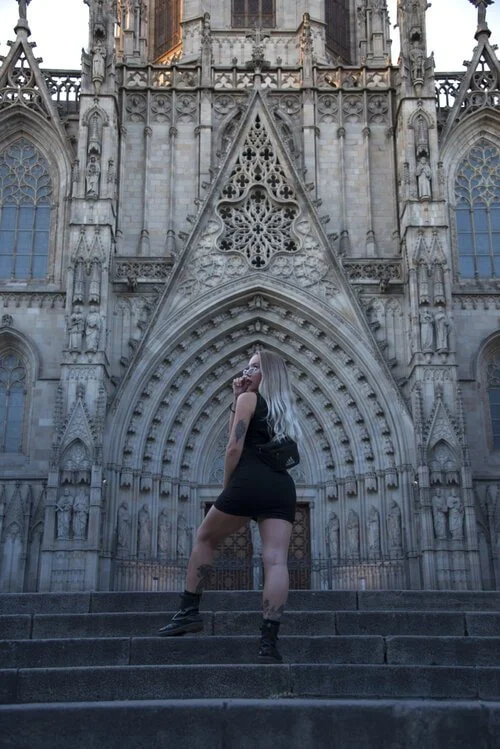
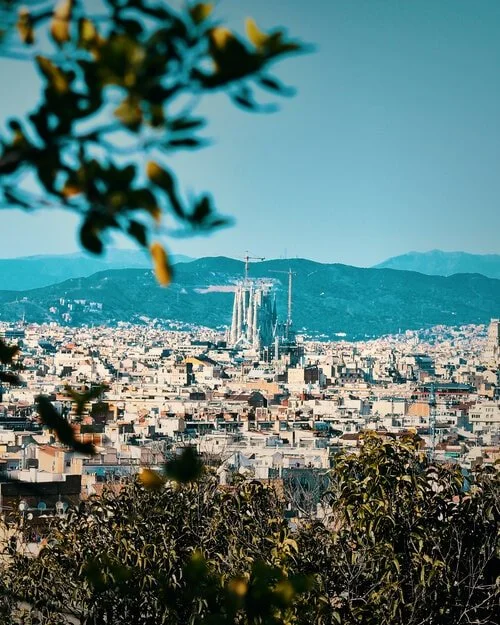
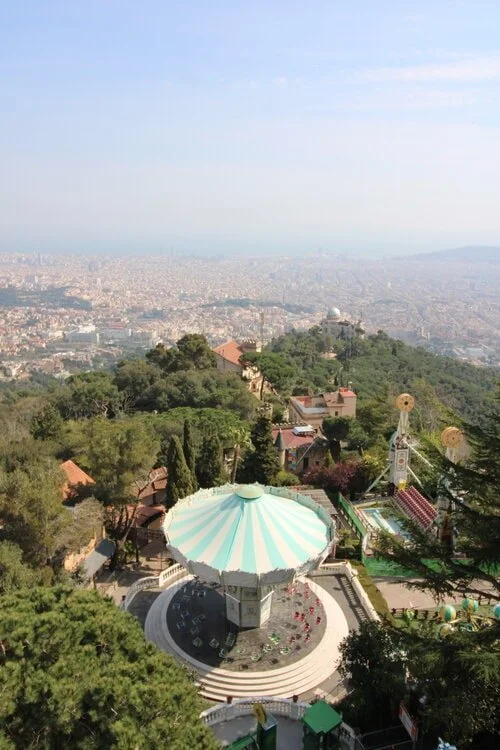
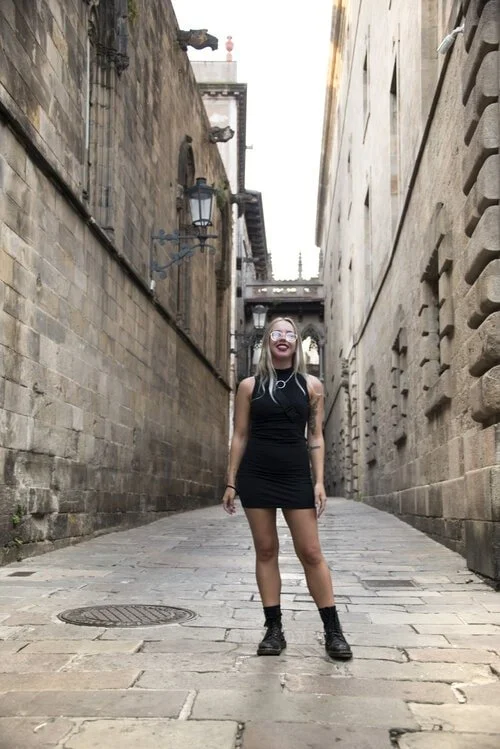
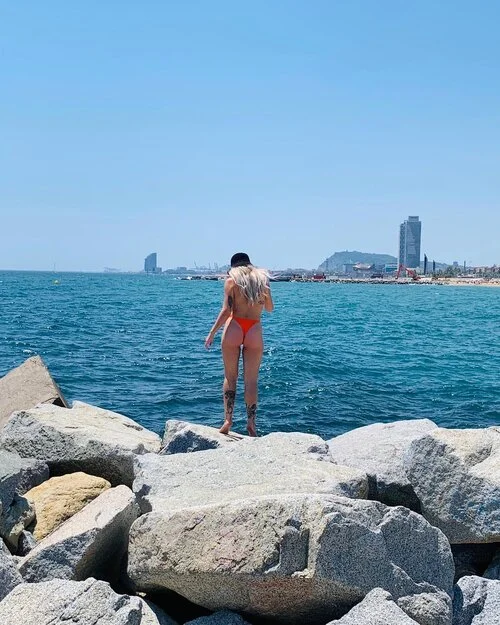
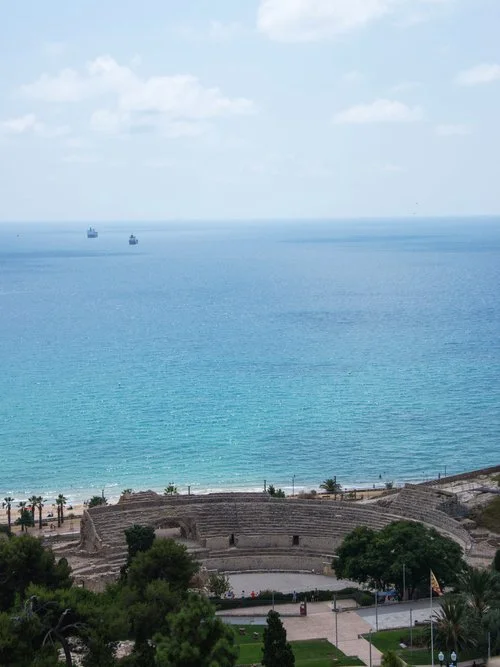
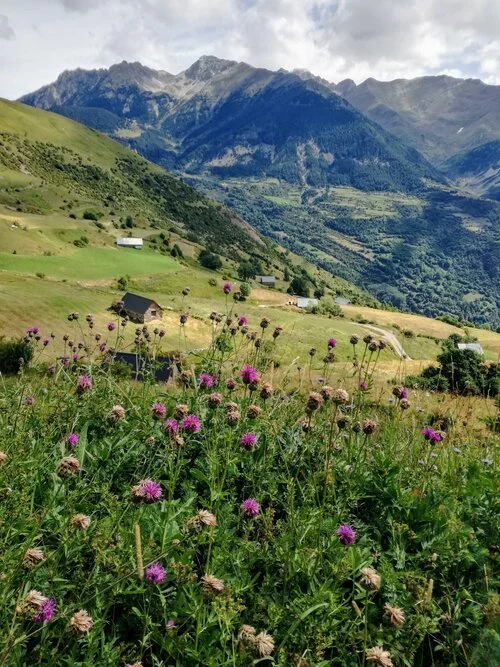
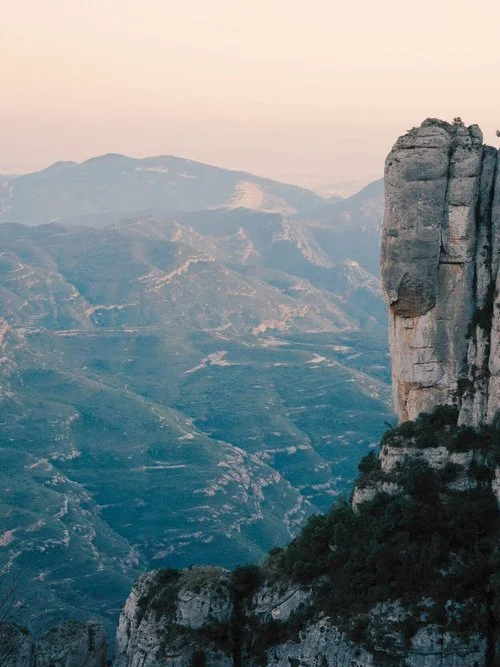

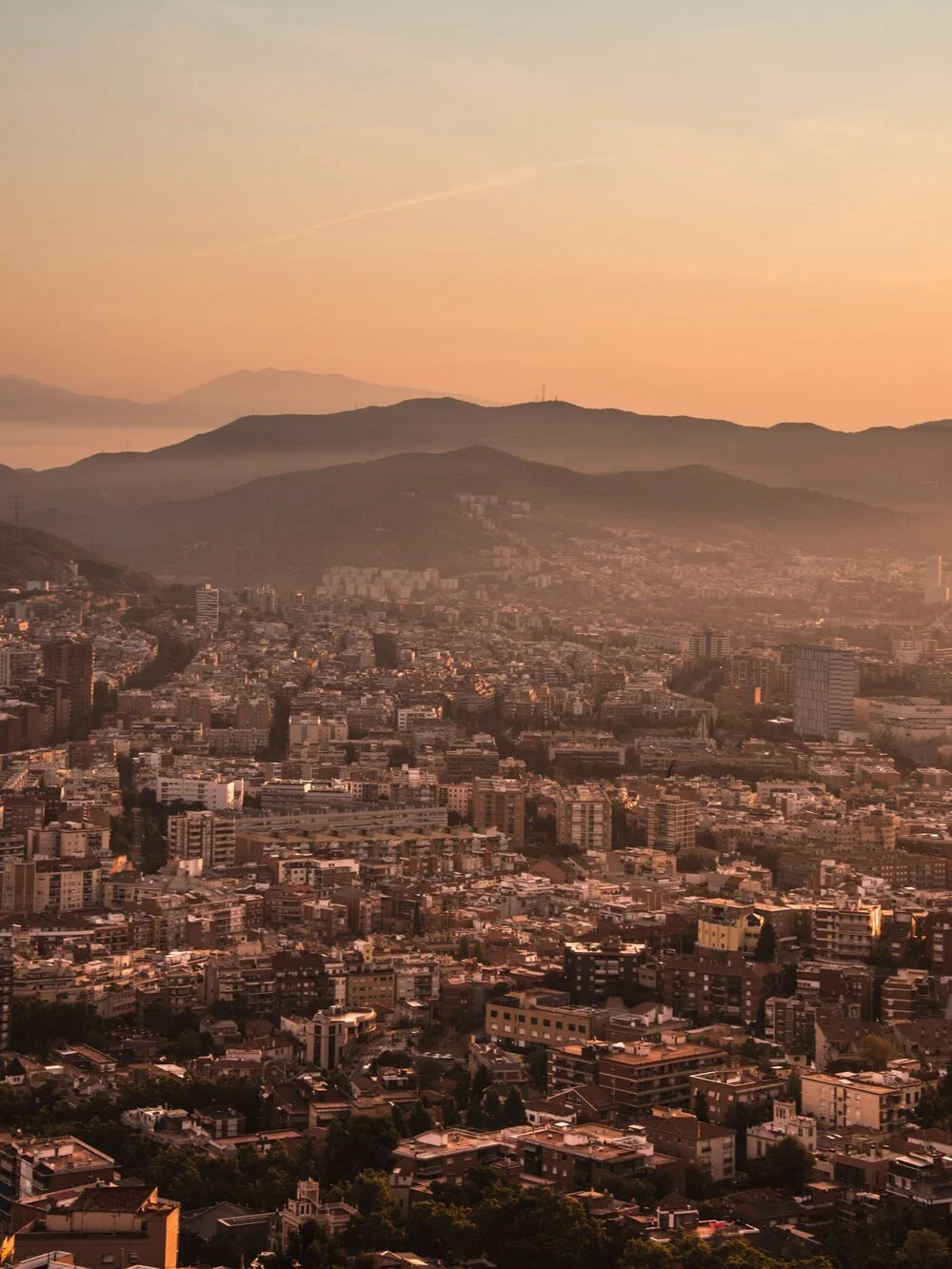

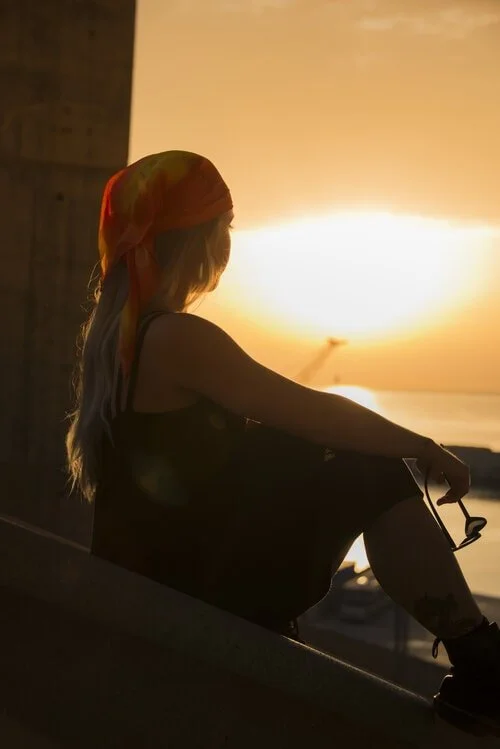
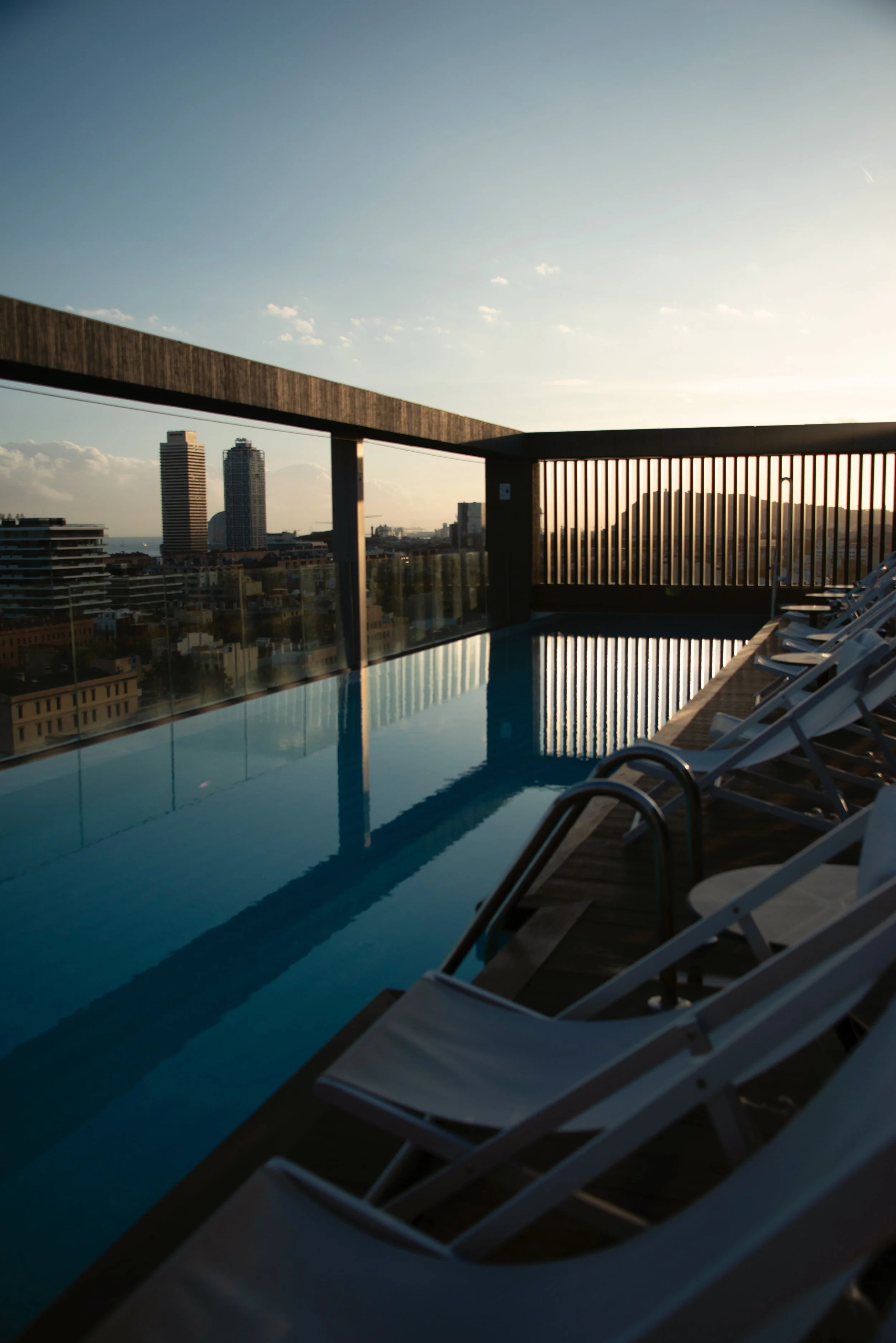






Looking for different ways to spice up your holidays in Barcelona? I’ve got just the treat for you. Fiestas, siestas and tapas are all the rage, but here’s why you need to add the Banksy Museum Barcelona to your itinerary.